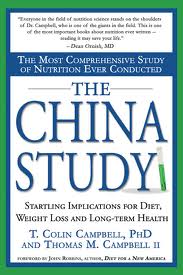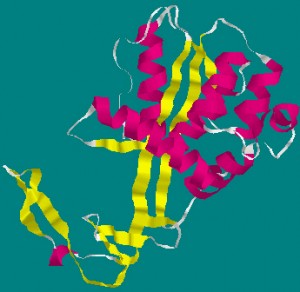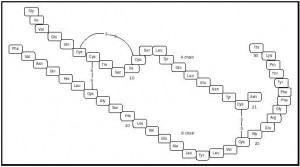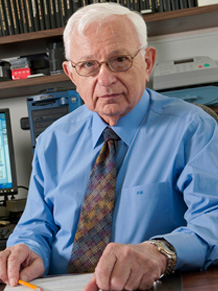The China Study was a popular book written by a physiologist T. Collin Campbell. The book sold tens of thousands of copies, and is commonly cited by vegetarians as scientific basis for their diet. Campbell himself is a vegetarian, or as he likes to call himself, “a whole plant eater.”

Campbell didn’t start out as a vegetarian, he grew up on a farm, and spent the first few years of his career thinking that the farm diet was the healthy way for a person to live. On the basis of his early work with some proteins and cancer, and some statistical work he did from rural China villages he wrote The China Study. In it he formed the conclusion that an animal based diet is the promoter for cancer, and that if people converted to a whole plant diet (not processed flours, pastas, or processed, white, rice ) they would lose weight, have less cancer, less heart disease, and less obesity.
To be fair, let me quote him:
“In fact, dietary protein proved to be so powerful in its effect that we could turn on and turn off cancer growth simply by changing the level consumed.” (page 6-7)
The premise for much of this comes from a Campbell’s work with aflatoxin – a potent carcinogen that is found in peanuts. Campbell’s work noted that with adding a milk protein casein – there was a direct relationship to the extent that rats appeared to get foci of cancer. Campbell then extrapolates that data from a milk bio-active protein to all animal proteins.
“..People who ate the most animal-based foods got the most chronic disease. Even relatively small intakes of animal-based food were associated with adverse effects. People who ate the most plant-based foods were the healthiest and tended to avoid chronic disease.”
His first declaration came from his lab studies where he examined the biologic influence of a milk protein (casein, which is a bio-active protein) on rats who were fed a potent carcinogen. The rats that were given more of this milk protein developed more foci of liver cancers.
Casein makes up 20-45% of the protein in human milk. Does this mean that mother’s should not breast feed their children? That we should not be drinking milk at all? Does this mean that all animal based proteins are cancer causing, and the reason we develop cancers?
The answer to all the above questions are NO. Simple experiments done with rats do not form universal answers to major health questions, nor do they provide us with scientific insight into the health of human beings.
First, let’s look at proteins. Proteins are called the building blocks of tissues. They are complex molecules that contain a number of amino-acids. Amino acids are divided into two types: essential and non-essential amino acids. Essential amino acids are those amino acids that humans cannot make, and thus we must get them from our diet. When you eat protein, the digestive process breaks down the proteins into the various amino acids which are then carted away by the blood stream and used to build or rebuild cells in your body. That is the simple stuff. Proteins are found in animals and plants. Once the protein is digested, and the amino acids are freed, your body has no idea if that amino acid came from a bean or a T-bone steak. The lysine (an essential amino acid) your body gets from a T-bone steak looks no different than the lysine your body gets from a soy bean or a walnut.
Proteins can have more of an effect than just being used as a source for amino acids. The way proteins are put together they look less like pearls on a string (amino acids being the pearls) and more like rather complex geometric shapes. Some of those shapes can unlock powerful changes in a person. Allergies, for example, come from proteins that turn on an overwhelming inflammatory response in people who are sensitive to them. Take that same protein and alter its structure so that the 3D structure of the protein is altered (this can be done by changing a single amino acid, or heating a protein, or putting the protein in a acid environment) – and that protein won’t cause the same reaction.
Proteins are quite complex – just to give you an example, here is a representation of what some people think the protein ovalbumin looks like (this is the protein found in egg whites):

A 3-D look at ovalbumin, the protein found in egg whites
One of my favorite proteins because almost 30 years ago we used some genetic modification of this protein expression in a virus, but that is another story.
Proteins are complicated 3-D structures, and like keys into locks, if you change a bit of their structure they no longer unlock the reaction. Some proteins cause other reactions in people besides the allergic reaction — but anyone can be allergic to almost any protein, except most people are not allergic to proteins their own body makes – except in some severe auto-immune disorders (arthritis, Lupus).
Other keys that proteins unlock can be hormonal. Insulin is a protein – it is made up of a chain of amino acids and looks like this:

The primary structure of insulin – each amino acid in sequence
Insulin’s is a protein, that if given in the blood stream will unlock cells and force glucose into cells. Without insulin blood sugar rises, people can go into coma, and long standing low insulin levels can cause all the complications of diabetes. But insulin is a bio-active protein.
But if you eat insulin, when the insulin is in the stomach, the acid of the stomach will quickly change the structure of the insulin, it will break down, and ultimately not be a bio-active protein, but instead become just a source of amino acids for the body to use.
Back to Casein- which isn’t a single protein, but a group of proteins found in milk. In Campbell’s work he gave rats that had been subjected to a cancer causing agent high doses of casein. He then examined their liver for foci of pre-cancer lesions, and noted they were higher with the higher levels of the milk protein. From that he determined that depending on the level of protein, its possible to turn cancer genes on or off. This becomes a later theme of the book. Increased levels of animal proteins cause human disease from heart to cancer, and here is some experimental evidence to prove it.
Casein is a bio-active protein- which is not surprising. If you want mammals to grow you want to give them proteins that will not only break down to supply nutrition, but will also serve to promote growth of those cells. One could conclude that if you have a cell that has been treated with a carcinogen that adding something that makes it grow will increase its growth.
A non-casein example is hormones and prostate cancer, for which Charles B Huggins received the Nobel prize in 1966. Huggins found a number of cancer cells were turned on and off by hormones. Estrogens are not proteins, they are another class of chemical compounds – but the idea that a chemical compound could signal and cause growth in cancer cells was well established with Campbell did his work with rats.
Back to the questions: Casein does not appear to have a role in any human carcinogensis. In fact, those milk proteins do appear to have a protective effect against cancer in humans. Campbell’s work with rats has not been reproduced to find the reason he saw what he saw at that time. Whether the test he used to predict cancer, and the proteins he fed those rats exposed to that carcinogen apply to humans in any way is more than any speculation.
Milk is more than casein proteins, there are also whey proteins- which have also been found to have an effect with cancer, a protective effect.
It is not the first time that someone doing bench research takes their ideas from the laboratory bench and applies them globally. It is what we are supposed to do. We are supposed to see the large picture. In this case, Campbell’s conclusion was that animal protein induced cancer, which did not happen with plant protein.
For part one of The China Study- while he reports years of his research as a basis for his beliefs, it does not hold up for all animal proteins. Animal proteins for the most part are broken down and serve as sources of amino acids and nutrition. Milk is an essential part of all mammal diets for their young . The world of research has gone beyond Dr. Campbell’s bench days, and is now looking at pathways of cell cycles within pathways, and nowhere to be found is the broad picture that plants are better than animals.
Many of the hypothesis that were generated in the laboratory I worked in no longer apply either. Some have, but research has become more and more focused on other pathways, with new pictures.

Bernard Roizman, my science mentor- where I spent many wonderful years in his lab
Still, for those who read The China Study, and wonder if milk is bad for you, or your baby, or if this is the simple model for cancer and turning off cancer genes — it is not.
In a future article on the China Study, we will focus on how they conducted the epidemiological research in China. We will take a unique perspective on it, we’ll take it from China itself, to see the pros and cons of how the rural village research and death statistics worked.
